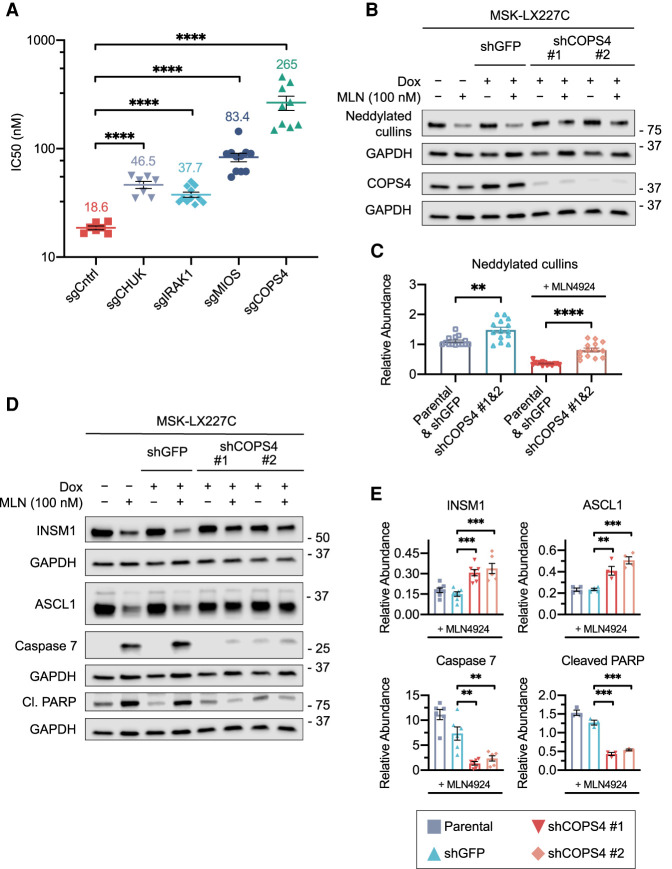Figure 7.
Abrogation of the COP9 signalosome and other pathways provides resistance to MLN4924. (A) Response to MLNL4924 treatment (72-h) upon CHUK, IRAK1, MIOS, or COPS4 invalidation in MSK-LX227C ex vivo cells. IC50s are shown. Data are means ± SEM, from at least n = 7 biological replicates. (****) P < 0.0001, unpaired Student's t-test. (B) Representative immunoblot analysis for NEDD8, showing the levels of neddylated cullins and for COPS4 in MSK-LX227C cells treated with DMSO or MLN4924 (100 nM) for 96 h. Parental MSK-LX227C ex vivo cells were compared with cells infected with an inducible shRNA targeting GFP or COPS4. On-dox cells were supplemented with 1 μg/mL doxycycline. GAPDH was used as loading control. (C) Quantification of relative levels of neddylated cullin protein abundance from multiple replicate immunoblot experiments described in B, showing combined parental MSK-LX227C and shGFP data compared with the combined data of two independent COPS4 shRNAs. Data are means ± SEM (n = 7 biological replicates). (**) P < 0.01, (****) P < 0.0001, unpaired Student's t-test. (D) Representative immunoblot analysis for the levels of neuroendocrine regulators and pro-apoptotic proteins for samples described in B. GAPDH was used as loading control. (E) Quantification of the relative levels of cleaved Caspase 7, cleaved PARP, INSM1, and ASCL1 protein abundance for multiple replicate immunoblot experiments described in D. Data are means ± SEM (n ≥ 3 biological replicates). (**) P < 0.01, (***) P < 0.001, unpaired Student's t-test. For C and E, relative abundance levels calculated by normalization to individual GAPDH loading controls with the untreated parental MSK-LX227C set to a relative abundance of 1.

